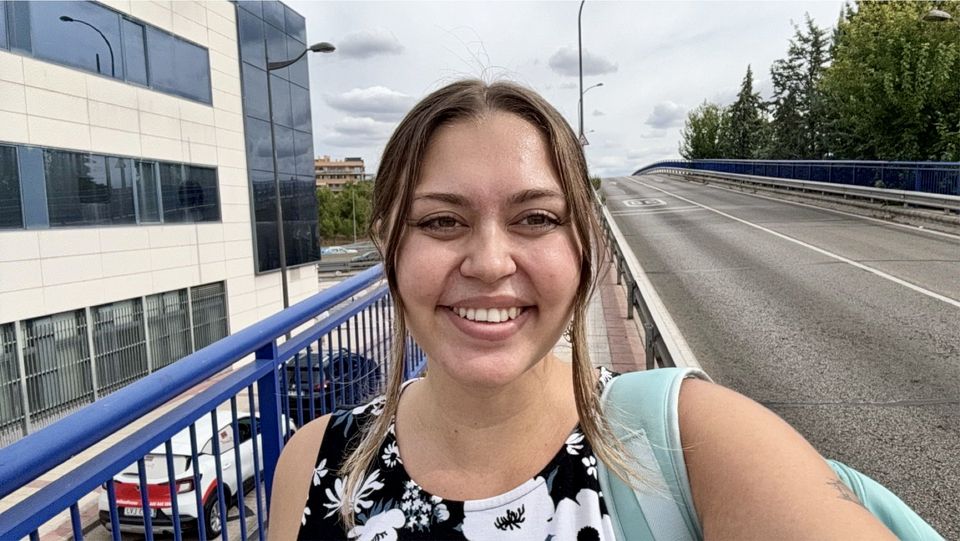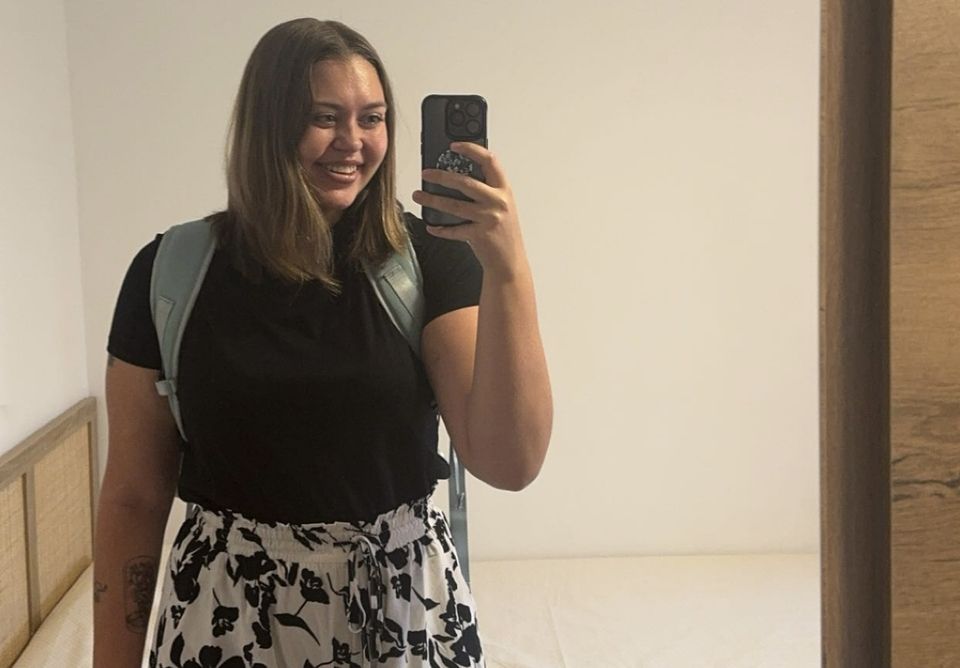My First Week as an Auxiliar de Conversación in Madrid
I didn't have a very clear idea of what to expect for my first week of working as an auxiliar de conversación. I knew the basics of the job, like that my main purposes are to help students improve their conversational English skills and to share my culture with them, but I was unsure regarding the details about what that looks like in practice. When I first received my schedule I was very confused about how to read it and what age groups I would be teaching, so here I wanted to share some basics I learned about the education system in Spain, how things work at my school, and what my first week looked like.
Basics of the Spanish Education System
Education is required in Spain for children ages 6 to 16. There are six years of primary education (educación primaria) for students who are normally between 6 and 12 years old. From ages 12 to 16, students complete four years of compulsory secondary education (educación secundaria obligatoria, commonly referred to as ESO). Some students may choose to enter vocational training or start working once they complete ESO, or Spanish secondary schools also offer 2 more years of courses known as “bachillerato” for students ages 16 to 18, usually to prepare for university.
My School
I am placed at a public secondary school that is non-bilingual. Some auxiliares are placed in bilingual schools where they may help teach other subjects like art or history, but because my school is non-bilingual I only assist with English language classes. I personally am very excited to be assisting with English language classes because I have previously volunteered teaching English as a Second Language (ESL) and really enjoyed the experience. I look forward to learning more about the differences between the Spanish and American education systems, and I am interested to see how English education here compares to my experience learning Spanish in high school and college.

Contacting My School
My first day of teaching was scheduled for October 1, and I emailed my school for the first time on September 4 to introduce myself, ask if the school needed anything from me before I started, and see if my school wanted me to visit before I started working. I did not receive a response for about two weeks, so I sent a follow-up email. I received a response from the head of the English Department, who gave me her phone number to coordinate a time for me to visit the school.
It is very important to note that most schools here in Madrid start sometime in September, so it is okay if your school does not respond to you right away! Some other auxiliares in my orientation group said their schools had not responded to them at all, and they just planned to show up at their schools on October 1.
The teachers are very busy adjusting to their own schedules for the year. One interesting thing I learned while talking to a teacher I work with is that teachers in the Community of Madrid public schools may not have much control over the school they work at because they are placed at different schools by the government. This specific teacher told me it is not her first year being a teacher, but it is her first year at my school. She told me she is still adjusting to the school and learning where all the classrooms are. So, while it is exciting to be starting your own experience as an auxiliar and you may want more information than you are initially provided, it is also important to be understanding of the circumstances your new coworkers may be facing.
Preparing for My First Day
I visited my school exactly one week before my first day. The head of the English department had a break in her schedule, so she gave me a tour of the school. I was also able to meet some of the other teachers in the department, as well as the secretary. The secretary gave me her email so I could send her all the documents the school needed from me (e.g. background check, banking information). I received my schedule, and the head of the English department asked me to prepare a presentation to introduce myself to the students in each of my classes for the first week.

Introducing Myself
To introduce myself, I created a Powerpoint presentation with basic information about myself like where I'm from and my age, my family, my pets, my home state and city, a map of the US, and my university. I created a presentation mainly with pictures and simple vocabulary so I could use the same presentation for different grade levels. Limiting the number of words on the slides also helps students work on listening comprehension, which is one of the main skills auxiliares can help improve. The students really enjoyed pictures of me when I was little, and the slide with my dogs was a fan favorite in every class. One interesting thing I learned before starting is that many students here call teachers by their first name instead of Mr. or Mrs. (Last Name) like we do in the U.S., which is why I introduced myself simply as Abby.
I also used my introduction as an opportunity to sprinkle in some references to U.S. pop culture, like the Statue of Liberty, Disney World, Harry Potter, and Caitlin Clark. I was able to use some of these references to later discuss the students' interests because the teachers wanted me to fill the whole class period after I finished my presentation. Before asking the students about themselves, I gave them an opportunity to ask me any questions they wanted to know about me or about life in the U.S. Some classes had lots of questions and I was able to fill much of the time by answering those. The most common questions were if I have tried Crumbl cookies, if I know who Mr. Beast is, and if I have a boyfriend. I did also get a couple questions about guns in the U.S. and had a serious conversation with one class about school shootings.

Other classes did not have many questions, or any at all, so I went around the room in order and asked the students to tell me their name and either their favorite color or food depending on the class. I then started asking them to tell me their favorite movies or TV shows, what kind of music they listen to, what they like to do in their free time, and other things about themselves. I also asked what cities I should visit in Spain, which I turned into an opportunity to make them speak more by making them explain why I should visit those places. I took the same approach to asking the students what food I should try in Spain, making them explain what ingredients are in the dish. In case anyone is wondering, the suggestions were: tortilla de patata, croquetas, paella, Iberian ham, and cocido madrileño, which is a chickpea and meat-based stew.
My Schedule
Monday | Tuesday | Wednesday | Thursday | Friday | |
8:30-9:25 | 1°C Bach. | 1°B Bach. | |||
9:25-10:20 | 3°C | ||||
10:20-11:10 | 3°A | 1°E | 3°D | ||
11:10-11:40 | Break (Recreo) | ||||
11:40-12:35 | 1°A Bach. | 3°E | 1°G | ||
12:35-13:30 | 1°D | 1°A | 1°F | ||
13:30-14:20 | 1°B | 1°C | 3°F | 3°B | |
Above is my weekly schedule. Monday is my day off, and my hours throughout the rest of the week were split between different days depending on the scheduling needs of the English department. As I said, I was very confused by my schedule when I first read it, so I messaged the department head for an explanation. The number in each time slot is the year in school that the group is in. So for example my first class of the week is 3°A, and 3° means 3rd ESO, or the students in their third year of obligatory secondary education. Most of my 3rd ESO students are 14-15 years old. At my school, students within each year are split into different groups that they have many of their classes with. So, the A in 3°A means the class is group A of 3rd ESO. 1°A Bach. means first year of bachillerato group A, and the students are 16-17 years old. My 1st ESO students are 12-13 years old. Each week I spend one class period with all of the groups in 1st ESO, 3rd ESO, and 1st Bachillerato.
By spreading my time out across these different groups, I am able to work with every teacher in my school's English department for at least one class period every week. Now that I am in my second week of teaching, each teacher communicates to me in advance what activity they would like me to do for each class period. So far I either take a small group of students aside to practice conversation skills, or I assist the teacher during an activity with the full class.

The Importance of Taking the Job Seriously
I want to end on a note about how important it is to take the job as an auxiliar seriously. While drinking coffee with other teachers during the daily recreo (which I highly recommend doing so you can make friends with your coworkers), a teacher in another department was talking about how last year, the school's auxiliar was very bad and didn't take the job seriously at all. Apparently, the auxiliar was always on their phone in front of the kids and not engaging like they were supposed to. Another teacher said that one time, the auxiliar came straight to work from the club.
This was really disheartening to hear during my first week because I felt like it conveyed a certain perception of auxiliares in general as simply taking this job so they can live abroad and party, which is not at all what I want my coworkers to think of me. So: don't be that guy. You have the ability to help shape students' education, which has very real implications for their futures. For the teachers you are working with, this is their job. You should treat it like one too.
Related Posts
The Ultimate Café Guide to Madrid
Looking for the best coffee shops in Madrid? This guide covers top spots for specialty coffee, matcha, delicious brunch, and cozy vibes—perfect for anyone craving quality drinks and Instagram-worthy interiors. Whether you're a local or visiting, these must-visit cafés offer the ultimate Madrid coffee experience.
Not Just for Business: Why Your Trip Needs a Mission Statement
If you're seeking deeper meaning and fulfillment in your travels, creating a personal travel mission statement can help guide your journeys with purpose. By aligning your trips with your values, goals, and vision for growth, you transform travel from simply visiting places into a powerful experience of connection, learning, and inspiration.
Wish You Were Here—Wish I Were There
Not a day goes by that I’m not deeply grateful for the incredible experience of living in Spain. From weekend adventures to the thrill of navigating a new culture, it’s... keep reading

